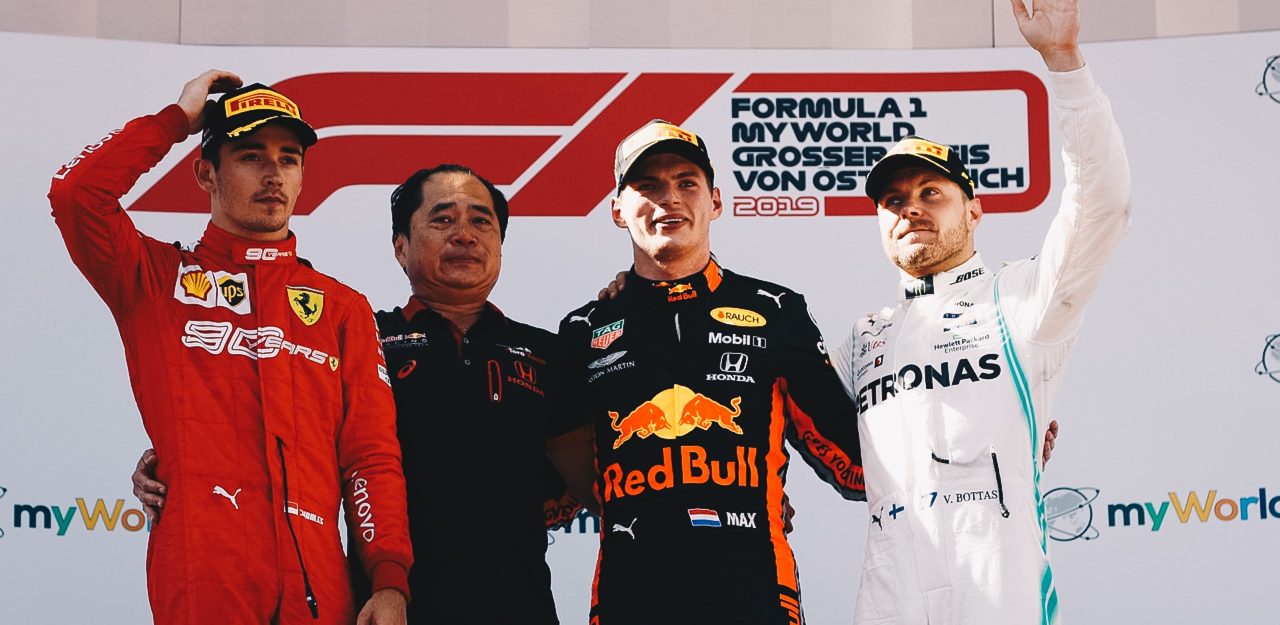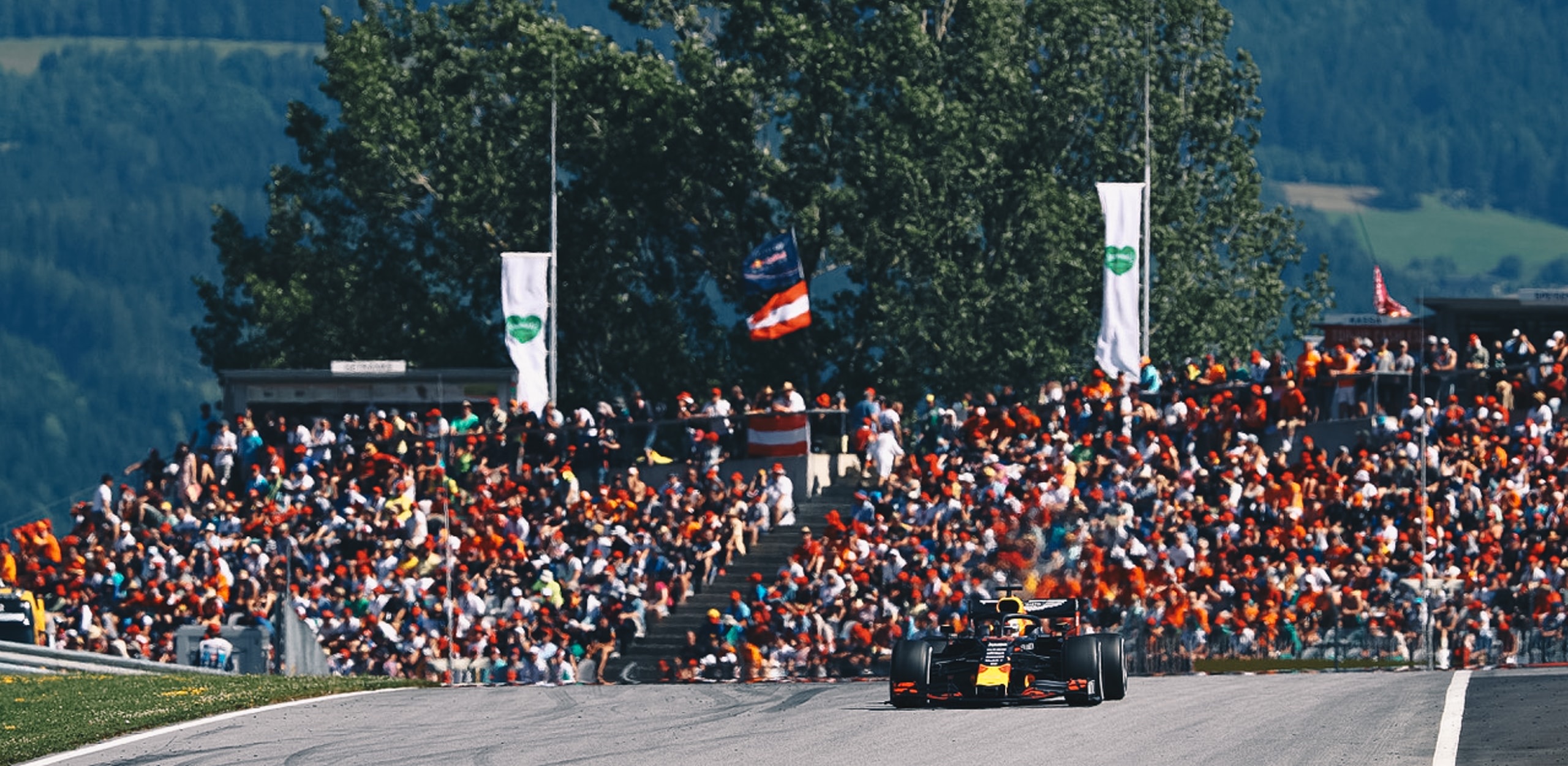
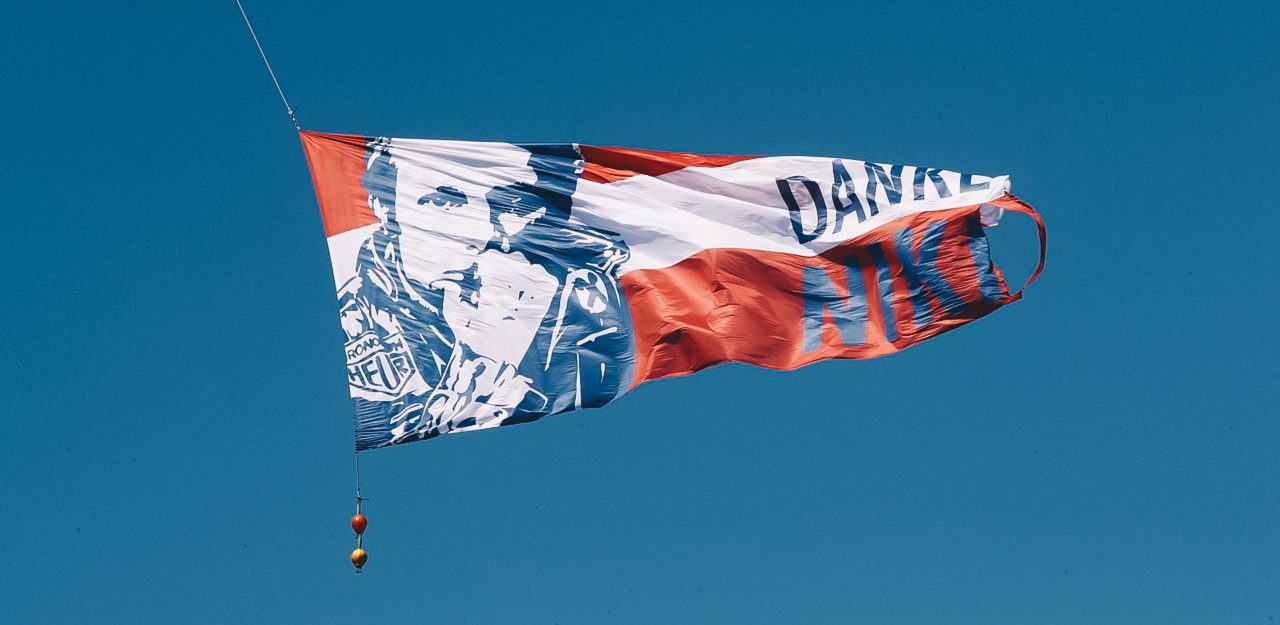

Red Bull’s Max Verstappen claimed a brilliant come-from-behind-victory at the Austrian Grand Prix after his literal wheel-on-wheel pass of Ferrari’s Charles three laps from the finish, miraculously turning a sickening system failure into his most memorable victory.
Verstappen’s technicians had set his car’s clutch too aggressive and at the start, his car’s anti-stall kicked in, stealing power while pole sitter Leclerc exploded off the line.
Verstappen dropped back to eighth by the first turn – and, because he represented less of a challenge to Ferrari, he was left to run a race of quiet brilliance, until pitting for mandatory tyres with 32 laps completed and 39 remaining, when his car “transformed.”
Fitted with tyres ten laps fresher than any of his competition, Verstappen mounted a stonking attack. Thanks to savvy tyre management and raw speed he chased down everyone, eventually overtaking Ferrari’s Charles Leclerc with three laps remaining.
Admittedly, Verstappen’s pass was more 1983 than 2019 pure, leaving the Dutchman’s final determination of victory in the hands of the FIA race stewards until their inquiry cleared his contact with Leclerc.
Leclerc once again came agonisingly close to his first F1 win, yet despite the profound disappointment, he refused to give away anything and hung on to finish second, just back. Valtteri Bottas struggled to finish in third place for Mercedes.
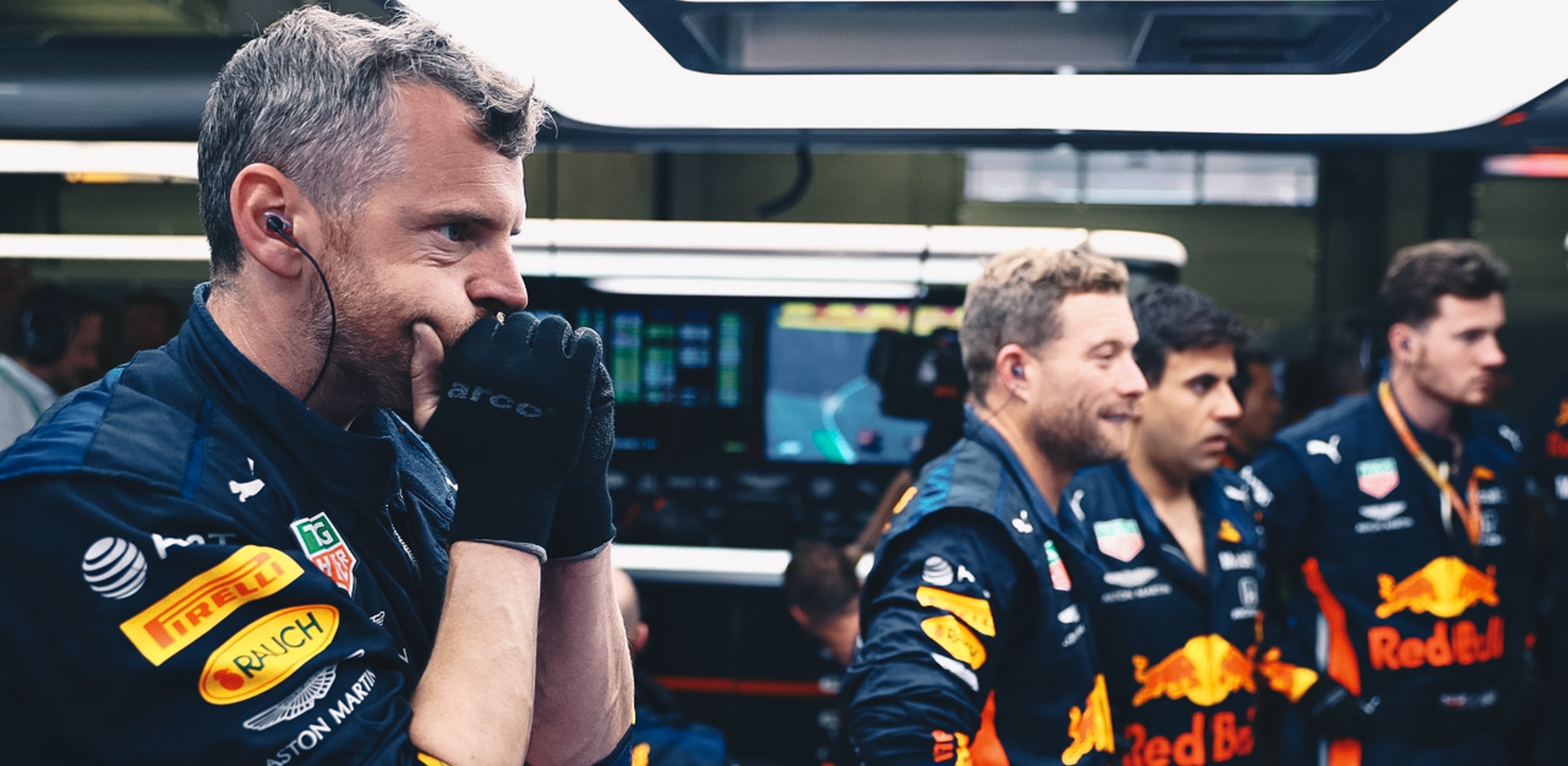
As the mechanics pushed their team’s cars to their starting spots, the 2019 Austrian GP had every ingredient of an epic F1 duel. The Red Bull Ring measured 56C at 2 pm, an hour before the start. F1 was about to feature the youngest front-row in the sport’s history with Charles Leclerc on pole with record speed and Max Verstappen ready to go head-to-head.
Then there were both Mercedes, menacing from the second row – Bottas third and championship leader Lewis Hamilton, starting fourth. Then, there was Sebastian Vettel, poised to tear through the field after starting only 9th after a mechanical glitch during qualifying.
Furthermore, Mercedes’ was deep in a battle with their ‘Achilles heel’ during the entire Grand Prix weekend – the W10’s shrink-wrapped bodywork had performed flawlessly in milder weather, but the track’s 660-metre altitude and 56C ambient temperature presented some technically severe implications. Cooling designed for sea level was massively less effective here, as was engine power and expected designed-in downforce.

Combined with a torque-rewarding layout – a significant uphill drag, and loads of acceleration out of slow corners, the Red Bull Ring was great news for Ferrari, and bad for Mercedes. The high altitude and searing ambient temperatures left Mercedes’ cooling marginal at best.
Thus, compared to the static boredom of the French Grand Prix just seven days earlier, the Austrian Grand Prix promised high drama.
It didn’t disappoint.
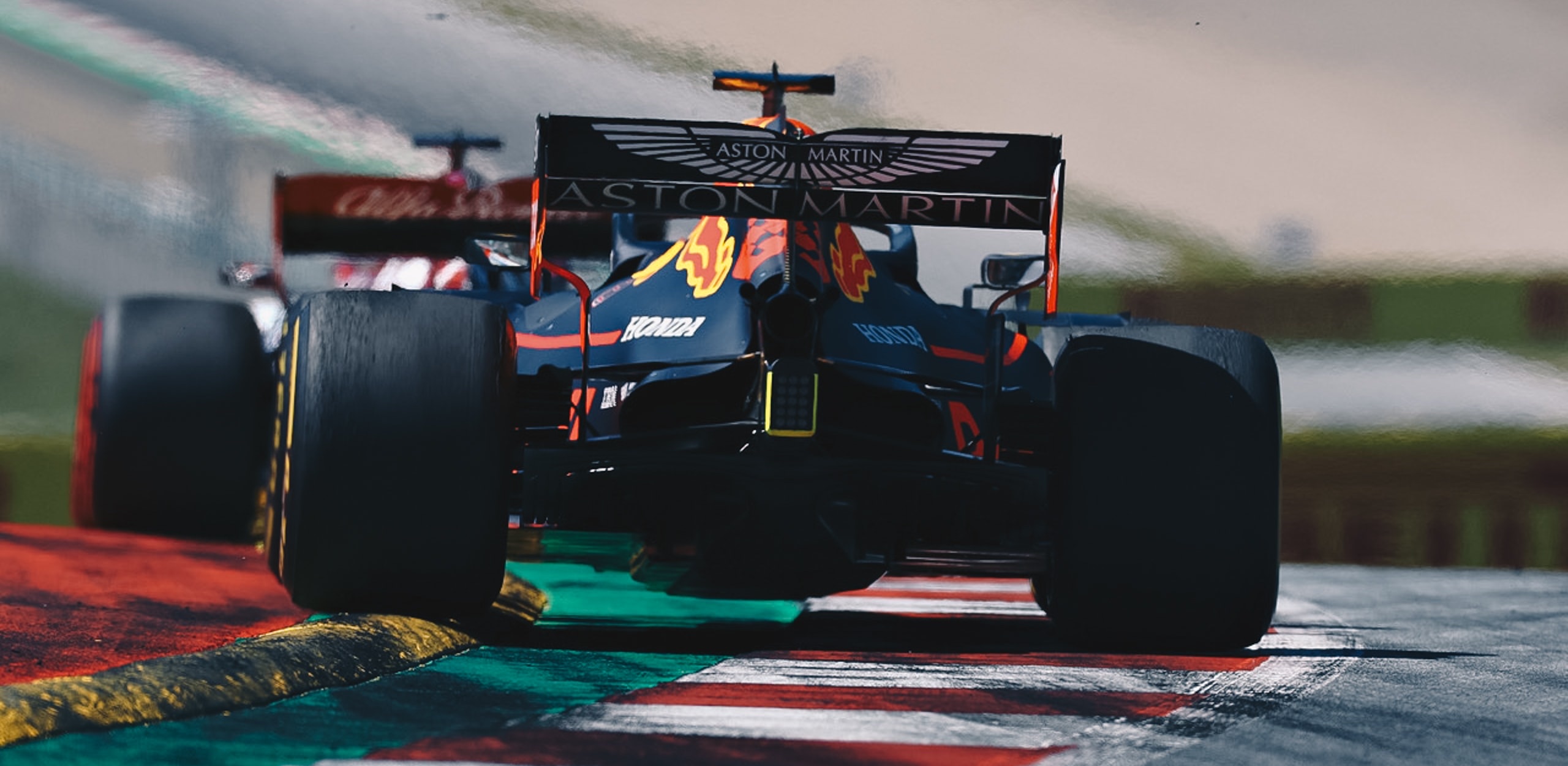
Leclerc produced a perfect launch from his second career pole and had no challengers entering Turn 1. Hamilton had to veer aggressively to miss Verstappen’s struggling RB15, with the Dutchman ending up in seventh by the end of Lap 1.
Bottas slipped into second place through Turn 1 behind Leclerc, while Lando Norris and Hamilton jostled for third until the World Champion shut the door on the teenager, whose momentary pause in pace was enough to let Kimi Raikkonen take him on Lap 1 as well, an to run as high as fourth. Meanwhile, Vettel was out of ninth place and up into sixth by the end of Lap 1.

Finding himself unexpectedly in seventh place, Verstappen had to instantly reorder his expectations to find a path back to the front. He would race quietly until Lap 32, but even before that target, his competitors began to communicate their weaknesses.
The first clue was in Mercedes hands, who believed they would pick up an advantage to Leclerc’s softs, so Bottas pitted first was on Lap 21, with Vettel stopping on the same lap.
Vettel then had to sit over 6-seconds, loosing all of his earned positions up from 10th because of a radio glitch.
Leclerc covered Bottas’s stop one lap after his pursuer, pushing Hamilton into the race lead as he and Verstappen extended their opening stints.
Hamilton pitted on Lap 30 after quickly losing chunks of time due to catastrophic front wing damage from continuously running wide over the outside kerbs in Turn 1.
The long stop put Hamilton eight seconds behind Vettel despite the Ferrari driver’s slow stop, and when Verstappen pitted one lap later, he rejoined ahead of Hamilton as well.
Thus the stage was set.
Even though Leclerc held a lead of around four seconds, Verstappen – at 12.9s off the lead in fourth, now had a complete tyre advantage.
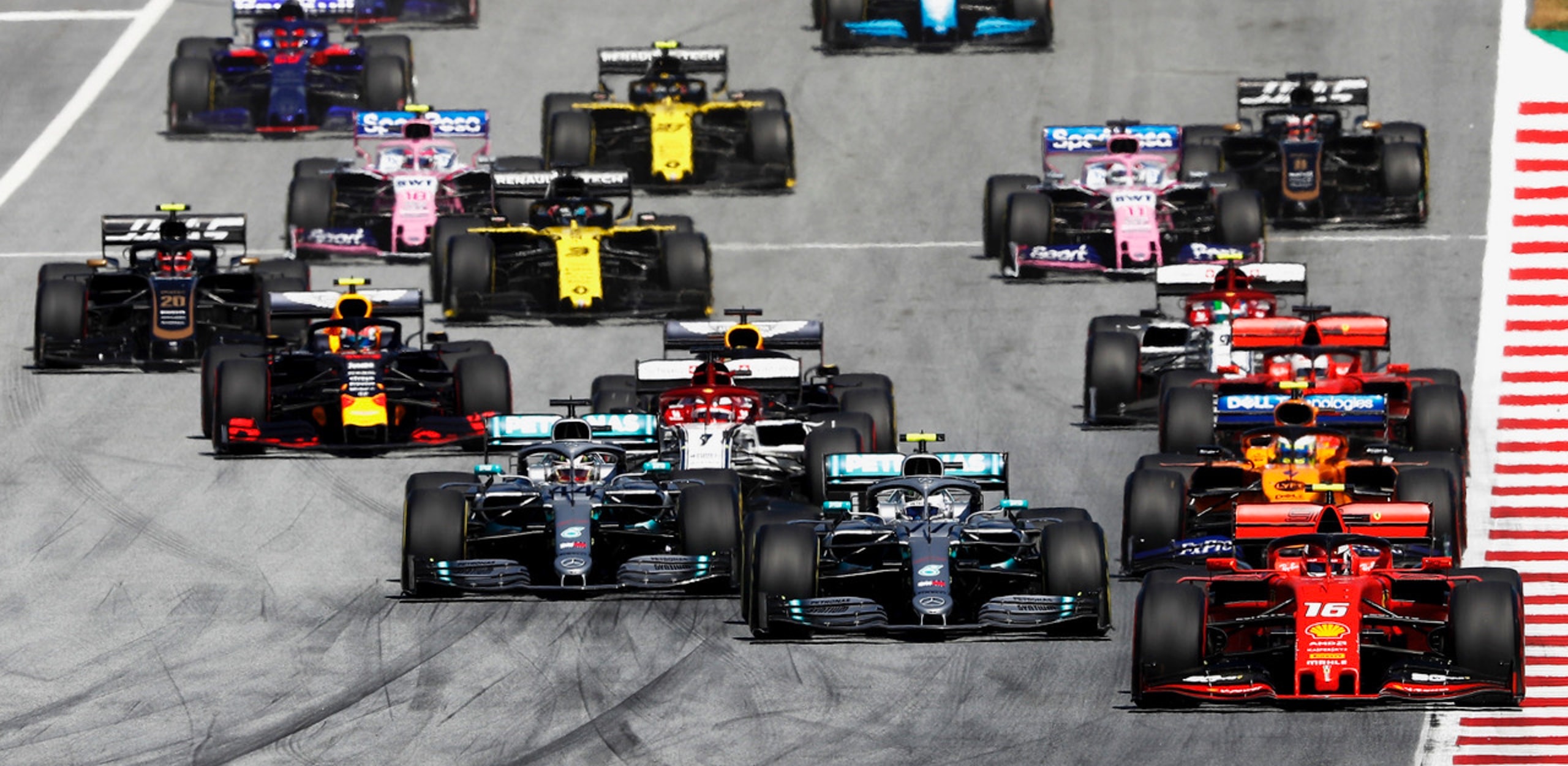
Verstappen had been pedalling along, content to save his tyres without the undercut worries experienced by Leclerc, Hamilton and Bottas. By the top three compromising their speed to retain – or try to gain – track position, they were a lot closer to Verstappen than they should have been.
As Hamilton pitted – Verstappen was thrust into the temporary lead. When Red Bull brought him in the very next lap, Verstappen only sat still for 1.8sec. Now Verstappen had fresh hards – tyres that were ten laps newer than those of his rivals ahead of him. He’d picked up a position thanks to Hamilton’s nose change delay and now had ahead of him Vettel, Bottas and Leclerc. He was 12.9sec adrift of the leader with 39 laps to go.
Verstappen learned he needed to go 0.33sec per lap faster than Leclerc while also passing the two cars in between them to win.
He asked for more power.
And Honda replied: mode 11. Run it to the flag.
That’s all Verstappen needed.
Up front, Leclerc was noticing the hard tyre was not as fast as the first stint’s soft. While he led Bottas steady by around 4-4.5sec, the tyre degredation was stronger than expected. Vettel was in the same boat and not able to advance toward Bottas.
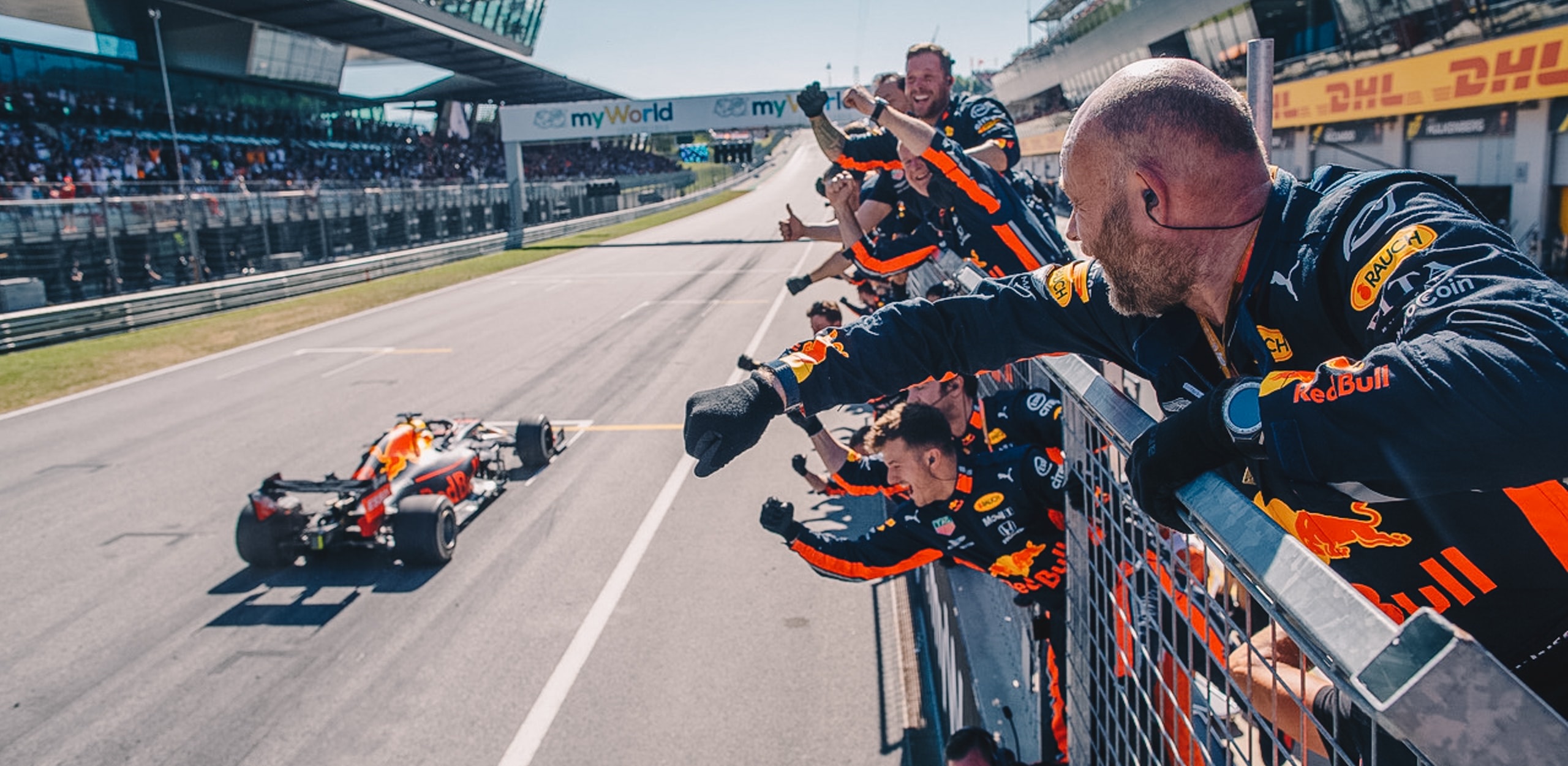
Somewhere at this time, the team strategists all reached the same epiphany. Verstappen is coming.
It took Verstappen 17 laps to reach Vettel, but once in DRS range, the Dutchman was coming through.
On lap 50 of 71, Verstappen went ahead of Vettel around the outside into Turn 4. One down. Moments later, Verstappen was on Bottas, passing the Finn for second place on the run up to Turn 3 on Lap 56. Two down.
Now it was only Leclerc, just six seconds up the track with 15 laps remaining.
It didn’t take that long.
With just five laps remained, Verstappen was on Leclerc’s gearbox and attacked from the outside into Turn 3 and 4, but Leclerc held his ground.
The next lap, Verstappen dived inside Leclerc with a superb move at Turn 3, but Leclerc barely held on around the outside and was able to outdrag the Red Bull down to Turn 4.
Finally, with three laps ago Leclerc covered the inside, but Verstappen moved right to the edge of the track, forcing Leclerc wide – and the two bumped wheels as Leclerc tried in vain to hang on again on the outside.
Game. Set. Match
Behind the top three, Vettel used his soft tyres to catch and overhaul Hamilton for fourth. Hamilton was limited to a muted fifth place, while teenager Lando Norris brought his McLaren home in sixth.
Red Bull’s Pierre Gasly followed him, with
Carlos Sainz Jr in eighth and the Alfa Romeo duo of Kimi Raikkonen and Antonio Giovinazzi in ninth and tenth – Giovinazzi finally banking his first F1 point in the process.
